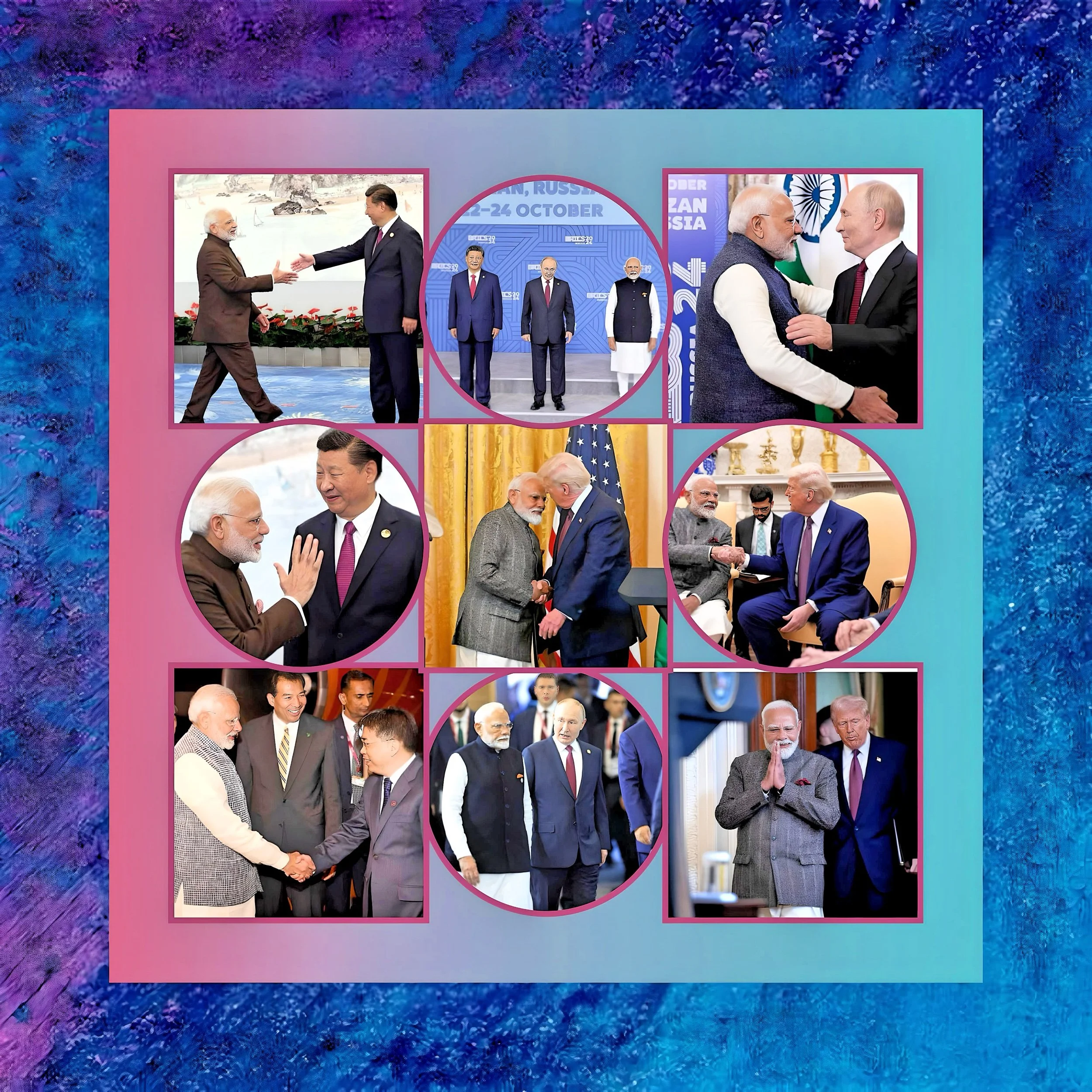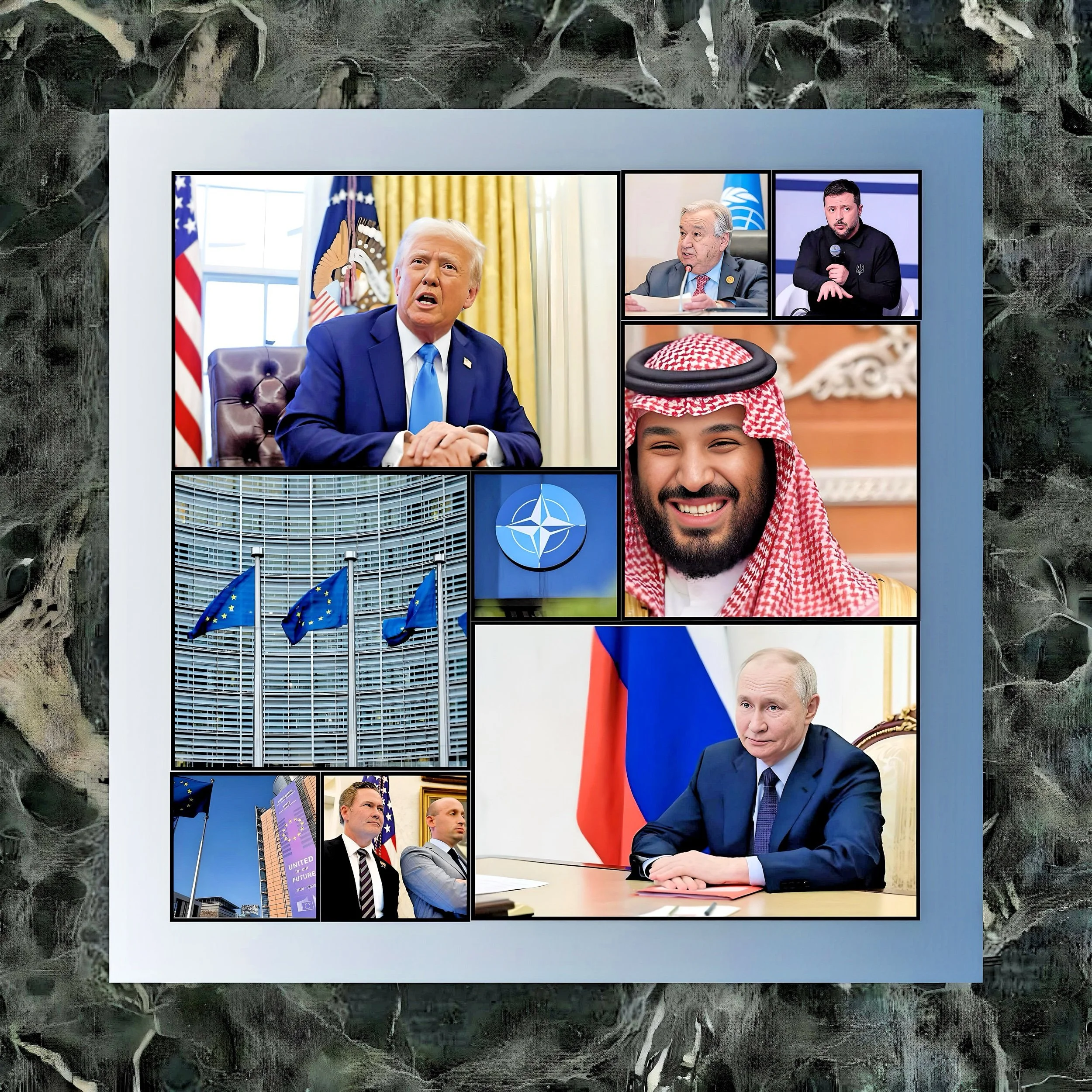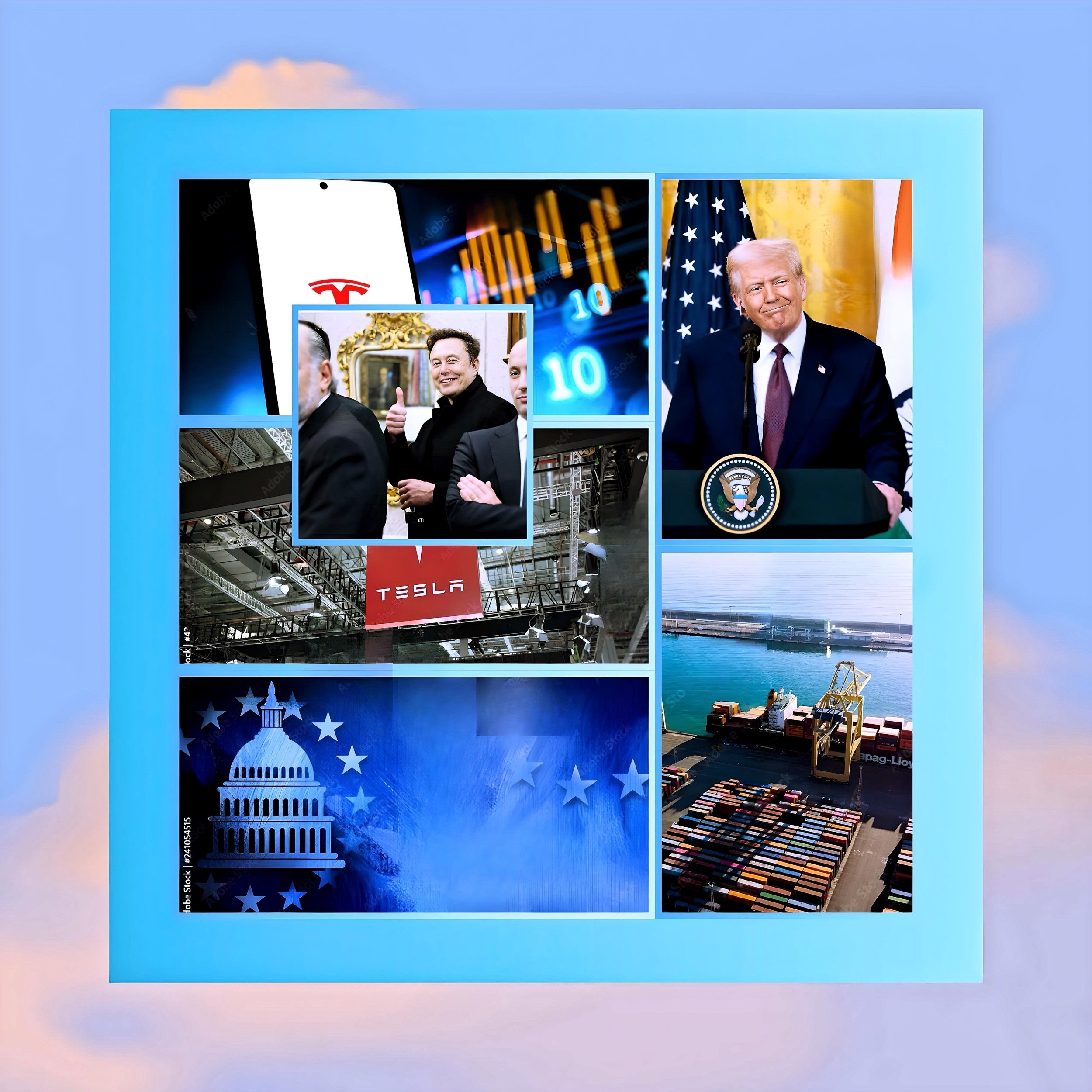India’s Strategic Positioning in the Trump 2.0 Era: A Comprehensive Analysis of Bilateral Relations
Introduction
The resurgence of Donald Trump to the U.S. presidency in 2025 has ushered in a transformative phase for global geopolitics, with India emerging as a key beneficiary of this shift.
The Modi-Trump rapport, cultivated during Trump’s first term and reinvigorated through early diplomatic overtures, has positioned India in a geopolitical “sweet spot.”
This favorable standing stems from a confluence of factors: proactive Indian concessions on trade tariffs, strategic alignment on countering China’s influence, collaborative energy partnerships, and a shared vision for defense modernization.
While Trump’s transactional approach to foreign policy has unsettled traditional U.S. allies, India’s calibrated balancing of national interests with bilateral cooperation has enabled it to navigate the complexities of Trump’s “America First” agenda.
The recent Modi-Trump summit in February 2025 underscored this dynamic, yielding agreements to double bilateral trade to $500 billion by 2030, expand defense co-production, and establish a “MEGA partnership” blending Trump’s “Make America Great Again” with Modi’s “Make India Great Again”.
However, underlying challenges persist, particularly regarding immigration disputes and divergent approaches to Russia.
This article examines the structural pillars sustaining India’s advantageous position and evaluates potential friction points in the evolving U.S.-India relationship.
Foundations of the Modi-Trump Strategic Partnership
Historical Context of U.S.-India Relations
The U.S.-India relationship has undergone a paradigm shift since the Cold War era, transitioning from estrangement to strategic partnership.
The foundational momentum began with President Bill Clinton’s 2000 visit, which initiated bipartisan support for stronger ties. Over two decades, shared democratic values and mutual concerns about China’s rise catalyzed cooperation across defense, technology, and trade.
Trump’s first term (2017-2021) accelerated this trajectory through initiatives like the Quadrilateral Security Dialogue (Quad) and the Indo-Pacific strategy, which positioned India as a counterweight to Chinese expansionism.
Modi’s 2019 visit to Houston, marked by the “Howdy, Modi!” rally with Trump, exemplified the personal chemistry that has become a hallmark of their diplomacy.
This rapport proved resilient despite Trump’s criticisms of Indian trade practices, as both leaders prioritized geopolitical calculus over transactional disputes.
The continuity of key Indian officials—such as External Affairs Minister S. Jaishankar, who previously served as ambassador to the U.S.—further stabilized ties during Trump’s second-term transition.
Personal Dynamics and Shared Political Philosophies
Modi and Trump’s alignment extends beyond geopolitics into ideological synergy. Both leaders espouse nationalist agendas—“America First” and “Atmanirbhar Bharat” (Self-Reliant India)—that prioritize domestic industries while leveraging globalization selectively.
Their recent public appearances, including Modi’s adaptation of Trump’s “MAGA” slogan into “MIGA” (Make India Great Again), reflect a concerted effort to frame bilateral cooperation as mutually empowering.
This personal bond has tangible policy implications.
During their February 2025 meeting, Trump notably refrained from criticizing Modi on human rights or democratic backsliding, issues that strained U.S.-India relations under the Biden administration.
Instead, he praised Modi’s leadership, stating, “When India and America collaborate, it’s a partnership of equals working for global prosperity”.
Such rhetoric signals Trump’s willingness to deprioritize values-based diplomacy in favor of strategic pragmatism—a stance that benefits Modi’s agenda.
Trade and Tariffs
Navigating Reciprocity and Surpluses
India’s Proactive Concessions
Anticipating Trump’s focus on trade deficits, India preemptively addressed key U.S. grievances.
In February 2025, New Delhi slashed import duties on Harley-Davidson motorcycles from 50% to 25% and reduced tariffs on premium automobiles, a move targeting Tesla’s potential market entry.
These concessions, estimated to boost U.S. auto exports by $1.2 billion annually, were strategically timed ahead of Modi’s Washington visit.
India also eliminated retaliatory tariffs on American almonds, apples, and lentils—a $900 million market—while agreeing to fast-track 24/7 customs clearances for U.S. pharmaceutical exports.
These measures helped avert Trump’s threatened “reciprocal tariffs,” which could have added $12 billion in annual costs to Indian exports like textiles, engineering goods, and IT services.
By demonstrating flexibility, India secured a commitment to negotiate a comprehensive bilateral trade deal by late 2025, focusing on reducing non-tariff barriers in agriculture and digital trade.
The $500 Billion Trade Vision
Central to the Modi-Trump framework is the ambitious target of doubling bilateral trade to $500 billion by 2030, up from $190 billion in 2024.
Achieving this requires addressing structural imbalances: The U.S. trade deficit with India stood at $45.7 billion in 2024, driven by pharmaceuticals ($19 billion), IT services ($14 billion), and gems/jewelry ($7.5 billion).
To rebalance trade, both nations agreed to
Energy Exports
Increase U.S. oil and LNG shipments to India from $15 billion to $25 billion annually, leveraging Trump’s “Drill, Baby, Drill” policy to stabilize global prices.
Defense Sales
Finalize pending deals for 24 MH-60R Seahawk helicopters ($2.6 billion) and 6 P-8I Poseidon aircraft ($3.1 billion), with co-production agreements for Stryker armored vehicles.
Tech Collaboration
Establish joint ventures in semiconductor manufacturing and AI, building on the U.S.-India Initiative on Critical and Emerging Technologies (iCET).
Defense and Security
From Buyer-Seller to Co-Developers
Expanding Defense Interoperability
The February 2025 summit yielded breakthroughs in defense collaboration:
Extended Defense Framework
The 2015 Defense Framework Agreement, set to expire in 2025, was renewed until 2035, ensuring continuity in joint exercises, intelligence sharing, and defense industrial cooperation.
Co-Development Initiatives
A landmark agreement to co-design and co-produce jet engines (GE F414) and infantry combat vehicles in India, with 65% indigenous content requirements.
Quad Reinforcement
Plans to host the 2025 Quad summit in New Delhi, focusing on maritime domain awareness and undersea cable security to counter Chinese assertiveness.
Counterterrorism and Extradition
A significant diplomatic win for India was Trump’s agreement to extradite Tahawwur Rana, a key suspect in the 2008 Mumbai attacks, marking the first high-profile U.S. extradition to India.
This gesture, coupled with intelligence-sharing agreements on Khalistani separatists, signals growing counterterrorism synergy despite prior tensions over human rights concerns.
Energy Diplomacy
Oil, Nuclear, and the Climate Paradox
Balancing Russian and U.S. Oil Imports
India’s energy strategy under Trump reflects pragmatic diversification:
U.S. Oil
Commitments to increase imports from 250,000 bpd to 450,000 bpd, contingent on price parity with Russian Urals crude ($4–$6/bbl discount).
Nuclear Cooperation
Modi’s push for U.S. investment in India’s nuclear sector, including Small Modular Reactors (SMRs), aligns with Trump’s interest in revitalizing America’s nuclear industry. Amendments to India’s Civil Liability for Nuclear Damage Act (2010) aim to attract Westinghouse and GE-Hitachi investments.
The Renewables Dilemma
While India aims for 50% renewable energy by 2030, Trump’s skepticism of wind/solar incentives has redirected collaboration toward “cleaner” fossil fuels. Joint initiatives on carbon capture for coal plants and methane reduction in LNG exports exemplify this compromise.
Immigration and Soft Power Dynamics
Addressing the Undocumented Indian Diaspora
With over 700,000 undocumented Indians in the U.S.—the third-largest cohort after Mexicans and Salvadorans—immigration remains a contentious issue.
India’s agreement to accept 104 deportees in February 2025, alongside expedited visa processing for U.S. tech workers, represents a quid pro quo balancing Trump’s enforcement priorities with Indian skilled labor demands.
Diaspora Diplomacy
Modi’s address to a joint session of Congress during his visit emphasized the role of 4.4 million Indian-Americans as a “living bridge” between nations.
Trump’s endorsement of the CHAI (Cultural Heritage of Asian Indians) Act, facilitating diaspora-driven cultural exchanges, underscores this soft power convergence.
Geopolitical Implications
China, Russia, and the New Non-Alignment
The China Factor
Trump’s hardline stance on China fortifies India’s strategic value.
Joint initiatives like the “Indo-Pacific Economic Corridor”—a U.S.-India counter to China’s Belt and Road—aim to connect India’s west coast to the Mediterranean via Israel and Italy, with $2 billion in initial U.S. funding.
Enhanced Quad coordination on critical minerals and rare earths further reduces dependency on Chinese supplies.
Russia’s Shadow
India’s $60 billion annual trade with Russia, including 1.7 million bpd of discounted oil, remains a friction point.
However, Trump’s outreach to Putin—and potential sanctions relief—could legitimize India’s Russian engagements while alleviating pressure to join Western embargoes.
Conclusion
Sustaining the Sweet Spot
India’s advantageous positioning under Trump 2.0 hinges on three pillars: proactive economic concessions, defense-industrial integration, and geopolitical pragmatism.
While challenges like tariff volatility and immigration disputes persist, the structural alignment against China and mutual energy dependencies provide durable ballast.
The “MEGA Partnership” framework, if implemented with reciprocal concessions, could elevate U.S.-India ties to a defining alliance of the 21st century.
However, New Delhi must navigate Trump’s transactional unpredictability by maintaining strategic autonomy—a lesson underscored by its continued engagement with Russia and multilateral platforms like the SCO and BRICS.
As the Quad evolves and global supply chains reconfigure, India’s ability to balance great-power expectations with developmental imperatives will determine the longevity of its current “sweet spot.”






